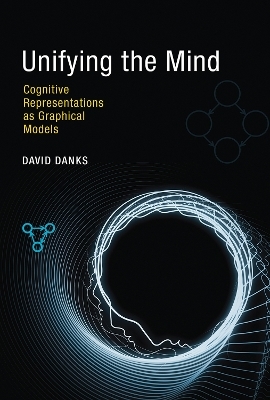
Unifying the Mind
Cognitive Representations as Graphical Models
Seiten
2014
MIT Press (Verlag)
978-0-262-02799-1 (ISBN)
MIT Press (Verlag)
978-0-262-02799-1 (ISBN)
- Titel ist leider vergriffen;
keine Neuauflage - Artikel merken
A novel proposal that the unified nature of our cognition can be partially explained by a cognitive architecture based on graphical models.
Our ordinary, everyday thinking requires an astonishing range of cognitive activities, yet our cognition seems to take place seamlessly. We move between cognitive processes with ease, and different types of cognition seem to share information readily. In this book, David Danks proposes a novel cognitive architecture that can partially explain two aspects of human cognition: its relatively integrated nature and our effortless ability to focus on the relevant factors in any particular situation. Danks argues that both of these features of cognition are naturally explained if many of our cognitive representations are understood to be structured like graphical models.
The computational framework of graphical models is widely used in machine learning, but Danks is the first to offer a book-length account of its use to analyze multiple areas of cognition. Danks demonstrates the usefulness of this approach by reinterpreting a variety of cognitive theories in terms of graphical models. He shows how we can understand much of our cognition-in particular causal learning, cognition involving concepts, and decision making-through the lens of graphical models, thus clarifying a range of data from experiments and introspection. Moreover, Danks demonstrates the important role that cognitive representations play in a unified understanding of cognition, arguing that much of our cognition can be explained in terms of different cognitive processes operating on a shared collection of cognitive representations. Danks's account is mathematically accessible, focusing on the qualitative aspects of graphical models and separating the formal mathematical details in the text.
Our ordinary, everyday thinking requires an astonishing range of cognitive activities, yet our cognition seems to take place seamlessly. We move between cognitive processes with ease, and different types of cognition seem to share information readily. In this book, David Danks proposes a novel cognitive architecture that can partially explain two aspects of human cognition: its relatively integrated nature and our effortless ability to focus on the relevant factors in any particular situation. Danks argues that both of these features of cognition are naturally explained if many of our cognitive representations are understood to be structured like graphical models.
The computational framework of graphical models is widely used in machine learning, but Danks is the first to offer a book-length account of its use to analyze multiple areas of cognition. Danks demonstrates the usefulness of this approach by reinterpreting a variety of cognitive theories in terms of graphical models. He shows how we can understand much of our cognition-in particular causal learning, cognition involving concepts, and decision making-through the lens of graphical models, thus clarifying a range of data from experiments and introspection. Moreover, Danks demonstrates the important role that cognitive representations play in a unified understanding of cognition, arguing that much of our cognition can be explained in terms of different cognitive processes operating on a shared collection of cognitive representations. Danks's account is mathematically accessible, focusing on the qualitative aspects of graphical models and separating the formal mathematical details in the text.
David Danks is Professor of Philosophy and Psychology and Head of the Philosophy Department at Carnegie Mellon University.
| Reihe/Serie | Unifying the Mind |
|---|---|
| Zusatzinfo | 24 line drawings |
| Sprache | englisch |
| Maße | 152 x 229 mm |
| Themenwelt | Geisteswissenschaften ► Philosophie |
| Geisteswissenschaften ► Psychologie ► Allgemeine Psychologie | |
| Geisteswissenschaften ► Psychologie ► Biopsychologie / Neurowissenschaften | |
| Geisteswissenschaften ► Psychologie ► Verhaltenstherapie | |
| ISBN-10 | 0-262-02799-2 / 0262027992 |
| ISBN-13 | 978-0-262-02799-1 / 9780262027991 |
| Zustand | Neuware |
| Informationen gemäß Produktsicherheitsverordnung (GPSR) | |
| Haben Sie eine Frage zum Produkt? |
Mehr entdecken
aus dem Bereich
aus dem Bereich
Techniken der Verhaltenstherapie
Buch (2024)
Julius Beltz GmbH & Co. KG (Verlag)
35,00 €


